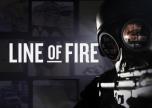« Line of Fire
Ep 1 - Rules of Engagement
Description
Episode One: Rules of Engagement
Who are the men in black who selflessly put themselves in the line of fire? In Rules of Engagement, the first episode of the three part documentary series Line of Fire, we get our first glimpse behind the balaclava and delve into the covert and controversial world that is the Armed Offenders Squad (AOS). Discover the genesis of this elite squad in the 1960s, the vital lessons learnt the hard way, and explore the conflicting reactions to the first fatal shootings in the 1970s.
Breakdown
The teething years for such a unique squad as the Armed Offenders Squad were never going to be simple. By definition they exist to confront people who have no respect for the law, and yet the AOS still need to comply with the law. With many quiet, ground-breaking successes, the early AOS were virtuosos in ingenuity but still simply policemen who at times felt tremendous fear.
The nature of an armed offender’s callout can change in a heartbeat.
Rules of Engagement provides insight to why the controversial squad was formed and why New Zealand resisted the arming of the police force. It examines the rudimentary gear, early training and the fly-by-the-seat-of-your-pants attitude, and deals with the first fatal shootings by the AOS.
Bruce Glensor had taken hostages and threatened police officers when he was the first man fatally shot by the AOS. Importantly, as the documentary reveals, this created a wild stir of emotion with regard to why they hadn’t shot to wound and what exactly were the fire orders. Interviewees recall being in that moment – deciding to shoot, or not to shoot.
Later in the early 1970’s the AOS were sent bush, this time to track a convicted killer. This gripping story is pivotal, as it’s here that the infamous dog section secured their presence in the squad. Once again, it’s another thrilling example of a ‘hairy call-out’ that very nearly went terribly wrong.
Negotiation or voice appeal quickly became an essential part of the AOS tool kit. Key interviewees reveal the way that clever improvisations such as cups of tea and cigarettes during negotiation can lead to successful outcomes. Other situations are a matter of time, patience and finding common ground.
In 1975, after so many unspoken successes, the AOS were forced to take another life and public debate again raged. Robert Moodie – then the head of the Police Association, later a prominent lawyer – went to bat for the officers in the Line of Fire, coining a phrase that would make international headlines and remains at the core of operations to this day.
Moodie wrote that members of the AOS “shoot not to wound, not to kill, but simply to achieve the instantaneous and complete elimination of the offender’s capacity to kill or seriously injure others.”
Rules of Engagement introduces and delves into the subtle complications of such work, and the very real, inevitable fear felt by squad members – not to mention their families at home.



